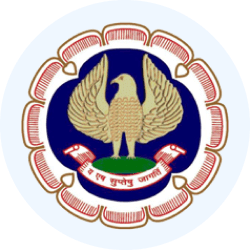CA Intermediate Exam > CA Intermediate Notes > Advanced Accounting for CA Intermediate > Accounting Standard 17 (AS 17): Segment Reporting
Accounting Standard 17 (AS 17): Segment Reporting | Advanced Accounting for CA Intermediate PDF Download
Applicability of Accounting Standard 17
Accounting Standard 17 applies to specific categories of businesses for a given accounting period. These include:
- Businesses with equity or debt securities listed in India and internationally
- Businesses in the process of listing their securities as approved by the board of directors
- Banks, including cooperative banks
- Financial institutions
- Businesses engaged in the insurance sector
- Businesses with turnover exceeding Rs. 50 crores in the previous accounting period, excluding other income
- Businesses with borrowings, including public deposits, exceeding Rs. 10 crores during a given accounting period
- Holding and subsidiary businesses of any of the above during a given accounting period
Business and Geographic Segments
- Business Segment: A business segment is a distinguishable unit of a business involved in offering individual products or services or a group of related products or services. It operates with unique risks and returns compared to other segments.
- Geographical Segment: A geographical segment is a distinguishable unit of a business providing products or services within a specific economic environment. It faces distinct risks and returns different from units operating in other economic environments.
Other Definitions
- Reportable Segment: A business or geographical segment that necessitates disclosed segment information.
- Enterprise Revenue: Revenue from sales to external customers as reported in the profit and loss statement.
- Segment Revenue: Comprises the fraction of enterprise revenue directly linked to a segment, a portion of enterprise revenue reasonably allocated to a segment, and revenue from transactions with other segments of the enterprise.
- Segment Expense: Includes expenses directly attributable to the operating activities of a segment, along with expenses reasonably allocated to the segment, including those related to transactions with other segments of the enterprise.
- Segment Result: The variance between segment revenue and segment expense.
- Segment Assets: Operating assets utilized by a segment in its activities, directly attributable to the segment or reasonably allocated to it.
- Segment Liabilities: Operating liabilities employed by a segment in its operations, directly attributable to the segment or reasonably allocated to it.
Identifying Reportable Segments
Reportable segments are identified based on specific criteria:
- Revenue from sales to external customers and transactions with other segments amounting to 10% or more of total revenue
- Segment result being 10% or more of the combined result of all segments in profit or loss
- Segment assets constituting 10% or more of total assets of a segment
Segment Accounting Policies
- Segment information should adhere to the accounting policies used for preparing the enterprise's financial statements. Assets and liabilities shared by two or more segments should be allocated to the respective segments, provided their related revenues and expenses are also allocated accordingly.
Primary Reporting Format
An enterprise must disclose the following for each reportable segment:
- Segment revenue
- Segment result
- Total carrying amount of segment assets
- Total amount of segment liabilities
- Costs incurred during the period to acquire segment assets for future use
- Depreciation and amortization expenses related to segment assets
- Significant non-cash expenses apart from depreciation and amortization concerning segment assets
Secondary Segment Information
If the Primary Segment Reporting Format is Business Segments:
- Segment revenue from external customers by geographical area
- Total carrying amount of segment assets by geographical location
- Total cost to acquire segment assets by geographical location
If the Primary Segment Reporting Format is Geographical Segments:
- Segment revenue from external customers
- Total carrying amount of segment assets
- Total cost to acquire segment assets
The document Accounting Standard 17 (AS 17): Segment Reporting | Advanced Accounting for CA Intermediate is a part of the CA Intermediate Course Advanced Accounting for CA Intermediate.
All you need of CA Intermediate at this link: CA Intermediate
|
52 videos|121 docs|6 tests
|
FAQs on Accounting Standard 17 (AS 17): Segment Reporting - Advanced Accounting for CA Intermediate
| 1. What is the main objective of Accounting Standard 17 (AS 17) on segment reporting? |  |
Ans. The main objective of AS 17 is to ensure that financial statements provide information about the different types of business activities in which an enterprise engages and the different economic environments in which it operates.
| 2. How does AS 17 define a business segment? |  |
Ans. AS 17 defines a business segment as a distinguishable component of an enterprise that is engaged in providing a single product or service or a group of related products or services and that is subject to risks and returns that are different from those of other business segments.
| 3. What are the criteria for identifying reportable segments under AS 17? |  |
Ans. The criteria for identifying reportable segments include factors such as the revenue threshold, segment result, and the segment assets of each business segment being 10% or more of the respective totals of the enterprise.
| 4. How should an enterprise disclose segment accounting policies under AS 17? |  |
Ans. An enterprise should disclose the accounting policies used for recognizing revenue and expenses, the bases of measurement of segment assets and liabilities, and the criteria for allocation of common costs to segments.
| 5. What is the primary reporting format required by AS 17 for segment reporting? |  |
Ans. The primary reporting format required by AS 17 is the financial performance of reportable segments, which includes revenue, segment result, and segment assets, as well as information about the geographical location of the segment's external customers.
|
52 videos|121 docs|6 tests
|
Download as PDF

|
Explore Courses for CA Intermediate exam
|

|
Signup for Free!
Signup to see your scores go up within 7 days! Learn & Practice with 1000+ FREE Notes, Videos & Tests.
Related Searches
















